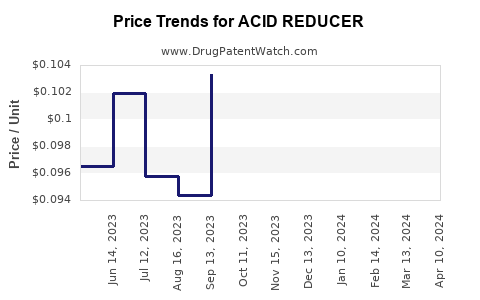Drug Price Trends for ACID REDUCER
✉ Email this page to a colleague

Average Pharmacy Cost for ACID REDUCER
| Drug Name | NDC | Price/Unit ($) | Unit | Date |
|---|---|---|---|---|
| ACID REDUCER 10 MG TABLET | 46122-0394-75 | 0.09455 | EACH | 2024-11-20 |
| ACID REDUCER 20 MG TABLET | 24385-0385-63 | 0.13703 | EACH | 2024-11-20 |
| ACID REDUCER 20 MG TABLET | 24385-0385-71 | 0.13703 | EACH | 2024-11-20 |
| ACID REDUCER 10 MG TABLET | 70000-0048-01 | 0.09455 | EACH | 2024-11-20 |
| ACID REDUCER DR 20 MG CAP | 70000-0232-03 | 0.39971 | EACH | 2024-11-20 |
| >Drug Name | >NDC | >Price/Unit ($) | >Unit | >Date |


